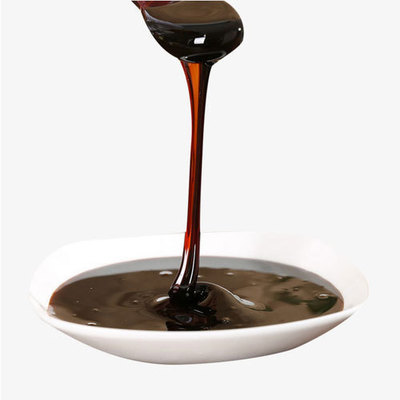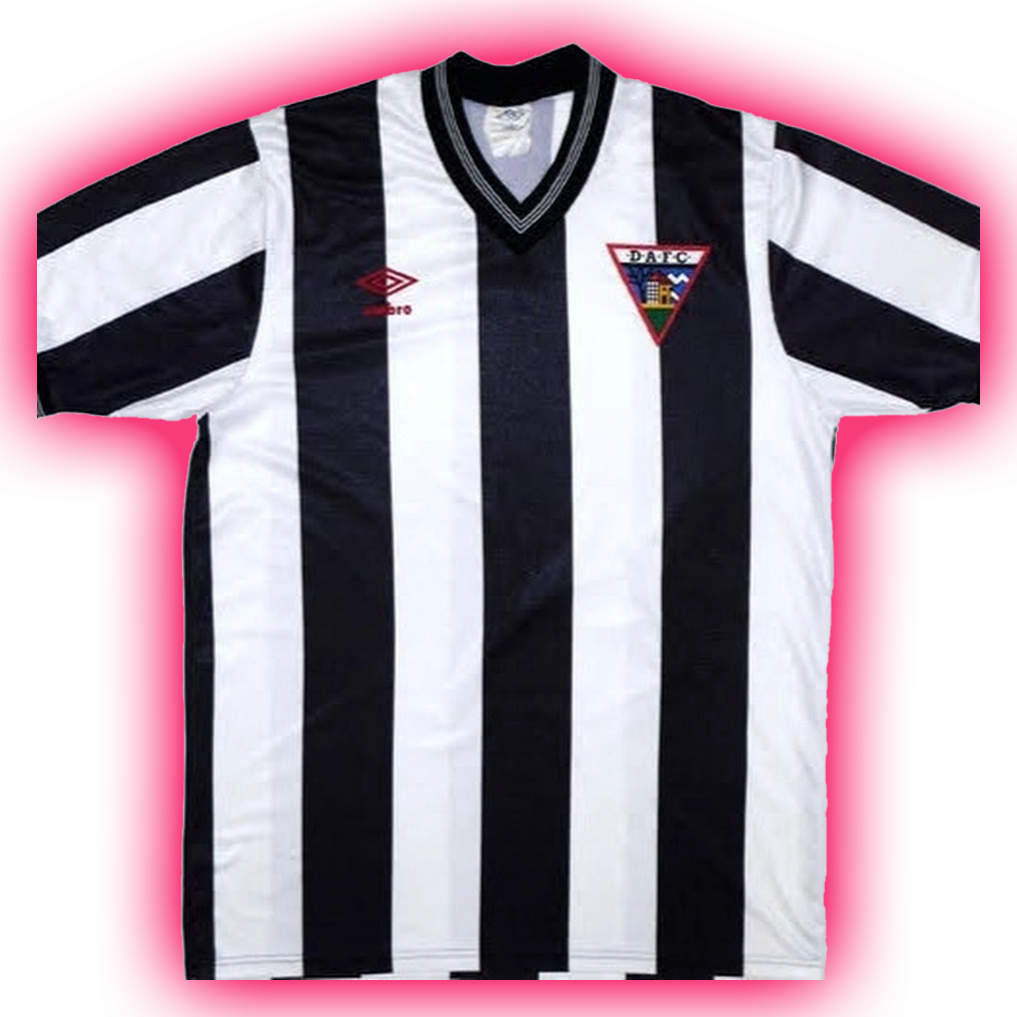Hi, I think in metric units, so almost everything is some form of a power of 10, like a kilogram is a 1000 grams, etc.
Sometimes I will think of an hour and half as 150 minutes before remembering that it is 90 minutes.
Does something similar happen to imperial units users? Because as far as I understand you don’t have obvious patterns that would cause you to make these mistakes, right?
Your last sentence is correct. We don’t have obvious patterns that would cause us any confusion (beyond the confusion we already have with this measurement system that makes no sense), so we simply memorize it.
I can’t believe after all these decades, the USA still sticks with the imperial system. It’s nonsense. But I grew up with the imperial system so that’s what feels natural to me and I can “feel” what a mile feels like, I can “feel” what an inch feels like, but if you speak to me in metric, since we in the USA are not as exposed to it over here, I need to pull out my calculator to make the conversions to understand how a meter relates to a foot and a yard, yes I hate it, I would rather be able to think and feel in metric because it’s more logical.
I’m with you on going metric. It’s insane that we still use imperial units.
Congress passed a bill in 1975 that was supposed to transition us to metric, but it obviously didn’t take.
I end up using metric units quite regularly for various reasons. My intuitive understanding of imperial units is still better, which irritates me.
That’s fascinating. I’d never heard of that one. It apparently made the metric system legal for commerce, but did not try to implement it for general use.
So we have been trying to get this right for almost 140 years…and failing.
Oh no, 230 years. 1866 was just the first time the Senate was involved, as far as I know.

imperial
Strictly speaking, it should be US customary units, not imperial. They’re mostly pretty similar or identical, but there are some substantial differences.
https://en.wikipedia.org/wiki/Pint
The pint (/ˈpaɪnt/, listenⓘ; symbol pt, sometimes abbreviated as p) is a unit of volume or capacity in both the imperial and United States customary measurement systems. In both of those systems it is traditionally one eighth of a gallon. The British imperial pint is about 20% larger than the American pint because the two systems are defined differently.
https://en.wikipedia.org/wiki/Short_ton
The short ton (abbreviation tn) is a measurement unit equal to 2,000 pounds (907.18 kg). It is commonly used in the United States, where it is known simply as a ton, although the term is ambiguous, the single word “ton” being variously used for short, long, and metric tons.
https://en.wikipedia.org/wiki/Long_ton
The long ton (symbol: LT[citation needed]), also known as the imperial ton or displacement ton, is a measurement unit equal to 2,240 pounds (1,016.047 kg). It is the name for the unit called the “ton” in the avoirdupois system of weights or Imperial system of measurements. It was standardised in the 13th century. It is used in the United Kingdom and several other Commonwealth of Nations countries alongside the mass-based tonne defined in 1799, as well as in the United States for bulk commodities.
I propose the term “colonial units” as opposed to “imperial units”.
There’s some things imperial is just better at. Like temperature. 100 f is hot, but literally not even half as hot as 100 c. We as people can perceive imperial temperatures a lot better than metric.
On “we as people can perceive imperial temperatures a lot better than metric,” I’d agree to disagree here - Celsius is pretty straight-forward. Temperate is temperature, it’s just about what numbers you’re assigning to which temperatures.
0°C is when water freezes, and 100°C is when water boils. A 10°C day is cold, a 20°C day is mild, a 30°C day is hot, and a 40°C day is when you melt.
Whatever you grew up with is probably what is going to be easiest for you to comprehend, but Celsius is no more difficult or less perceptible, just a different value range.
For Fahrenheit It’s the more graduations between degrees in a range that’s easy to tell comfortability.
Temps easily relatable conditions <0 throw boiling water up in the air to make it snow 0-10 dangerous freezing cold 10-20 bitter freezing cold 20-30 freezing cold 30-40 coat cold 50-60 jacket cool 60-70 cool 70-80 pleasant 80-90 warm 90-100 hot 100-110 too damn hot for my fat ass/fry an egg outside If metric wanted to adopt a scale with more graduations that could be easily grouped to 10s, that’d be great. I don’t know why 0-100 was arbitrarily chosen to be the scale for water instead of 0-1000.
You don’t need the extra gradations. Trust me.
And if you don’t trust me, do what I did!
(I will preface this by saying “the best unit is the one understood by the audience.” So there is obviously no reason to do this if it doesn’t interest you. But I enjoyed it!)
I’m American, raised on Fahrenheit. I long used the argument that Fahrenheit was really good for humans, because it has lots of specificity and it describes a range that represents weather for temperate climates.
But I decided back in 2019 to learn Celsius. This was precipitated (hah! weather pun) by a trip to the UK and memorizing a few points so I’d be able to understand the weather if someone told me. Specifically I memorized 10°C=50°F, 20°C = 68°F, 30°C=86°F. Halfway between those also, 15°C=59°C, 25°C=77°F. Then if someone told me the temperature in Celsius I could find my nearest memorized point and move 2°F per °C (a close enough approximation). So 22°C, start at 68°F and add 4 to reach 72°F. (The actual value is 71.6°F, so this is clearly accurate enough for weather.)
After I got back from the UK I decided to just keep using Celsius as an experiment. After all, I had been saying for years that Celsius was better for science and Fahrenheit was better for weather, why not test the hypothesis?
Well, it’s been almost 5 years and I’m still using Celsius for weather.
It turns out there are two major things making Celsius better for the weather. 1, having too much specificity actually hurts the scale. A degree Fahrenheit doesn’t have enough meaning, so it’s harder to have a sense for how much change you get. Once I started to get a feel for Celsius (which did take a few weeks/months) it was remarkable how quickly I attained a sense for what those degrees communicated.
But the much more important one is point 2: freezing is 0.
I didn’t think this would matter as much as it did, but oh boy is it fantastic. Temperatures below freezing in Fahrenheit never really meant much to me. They were just cold. But since in Celsius they are just negatives, I can actually understand them much more easily.
That is to say, 23°F doesn’t really mean anything to me, but -5°C means “as far below freezing as 5°C(41°F) is above freezing.”
(Anyway, your chart of temperature ranges to words maps just fine in Celsius if you use 5s. <-15, -15 to -10, -10 to -5, -5 to 0, 0 to 5, etc.)
This might be the first time I’ve been told that more specificity in a measurement is bad, lol. I use both imperial and metric everyday. Cooking in the kitchen was my entry point as being an American. Calculating percentages for recipes is always easier on metric. Short distances when working on projects is easy enough too. The more graduations in millimeter wrenches over fractional inches was the main reason I wanted to switch in the first place. Which brings me to the problem I’ve always had with temperature. I’d rather have the extra graduations for weather, but am fine with Celsius everywhere else especially in applications that I measure temps close to water boiling for instance in filament temps for 3d printing or CPU GPU temp monitoring.
Hey, to each their own. Like I said, the best unit is the one understood.
Personally I don’t care about 68°F vs 69°F, so °C works fine for me. And I suspect there are people similar to you who grew up with Celsius and use half degrees. But I’m not gonna tell you you’re “wrong” because you aren’t. I’m about half a degree frustrated that you got downvoted for this!
No worries. Downvoting an unpopular opinion is one of the Internet’s greatest traditions. Don’t let google gaslight you into thinking that removing the display of downvotes on YouTube is a good thing either.
Not trying to be mean, but why not use fractions if you need to be more precise? If you need to express “halfway between 20°C and 21°C” you could just say 20.5°C.
I can, but there’s a phrase in talking about weather with Fahrenheit. When someone says the temp is going to be in the 70s all day, that accounts for the entire fluctuation from cooler mornings to hot afternoon. It’s the grouping of temps in a range by 10 degrees and that the graduations are set just enough apart that on normal days the temps usually stay within 10 degrees during the day and drops by another 10 degrees overnight. This makes the phrase “it’s going to be in the 70s all day” easy to understand especially when using my chart. You can usually bank on pleasant weather during the day and a need for long sleeves or a light jacket at night.
Fahrenheit ironically is the most base 10 like measurement for a non-SI measurement, at least when it comes to grouping temps by tens in relation to weather. Everywhere else I really do prefer Celsius.
Easier to remember that water freezes at zero and boils at 100 vs 32 and 212? (Im in US)
I’d argue that’s just because you’re more familiar with Fahrenheit (making the assumption you grew up with it).
Celsius is just as ‘good’ as anything, better if you consider that measuring temperature extends beyond human comfort ranges.
That is just absolute nonsense.
I am a Swede, I grew up with the celsius scale and it makes far, far more sense than Farenheit.
In Celsius, 0 is the freezing point of water, 100 is the boiling point of water, it makes sense.
Farenheit on the other hand starts at 0F, set as the freezing temperature of a custom made brine, and 90F was set as Farenheit’s best estimate of the average body temperature, tuis was later revized as 96F.
The custom brine solution is a good start as long as it is made custom from scratch using distilled water and pure salt meassured exactly.
The 90F/96F is just dumb.
As for you being able to perceive F temps better than C temps, that is just because you are used to F over C.
In metric, one milliliter of water occupies one cubic centimeter, weighs one gram, and requires one calorie of energy to heat up by one degree celsius—which is 1 percent of the difference between its freezing point and its boiling point. An amount of hydrogen weighing the same amount has exactly one mole of atoms in it. Whereas in the imperial system, the answer to ‘How much energy does it take to boil a room-temperature gallon of water?’ is ‘Go fuck yourself,’ because you can’t directly relate any of those quantities.
Cool. Any other uninteresting facts you’d like to share?
Here, I’m not who you replied to, but you’ll get my “uninteresting” fact anyway: The US customary units (at least most of them) are defined using the metric system.
Lots!

“we as people” - citation needed, lol.
But I don’t disagree with you. Of course we’d have to switch from kelvin to … Was it Rankine? … To keep everything consistent and some physics constants would have to change as well.
The advantage of the metric system is the scaling. The base value does not matter. We could measure everything in feet for all I care, but no inches or miles then! Only kilofeet, centifeet, millifeet, etc! And we need a better distinction between force and weight than “pound” and “pound-force” - seriously, whoever came up with must have had negative creativity.
Please elaborate. I’m trying to understand why you think that people perceive Fahrenheit better than Celsius (metric).
A human has a core temperature between 36.1°C (97°F) and 37.2°C (99°F). If a person has a fever, it can be anything from 38°C (100.4°F) to 40°C (104°F). If we then don’t have a thermometer to measure the temperature, our perception of “hot” will be the same when trying to determine if there’s a fever or not.
Down at the beach water freezes at 0°C (32°F) and boils at 100°C (212°F). So it’s dead simple for a 3 year old to understand since they just have to see the ice/ steam.
100°F not so much since there’s nothing you have that you can relate to that is 100°F exactly.
It relates to the temperatures you’d expect to feel in nature.
They’re saying that since imperial units were designed to relate to physical things, instead of standardizing around a common thing, things like temperature can have a scale that makes sense. It’s really easy to learn that 0 is a cold ass day and 100 is a day you’re gonna sweat your ass off. That’s about the extent of the positives you get from it.
For measuring everything metric is obviously better.
I disagree with you claiming that F makes it easier to relate to physical things than C, it is just as easy to learn that -10 it is a cold winter day and at 30 it is time to break out the ice cream and cool down.
Ok. You’re free to disagree but I never said that.
But that’s the exact problem. The human body adjusts.
One person in Norway might tell you that 59°F is t-shirt weather while another person living in India might say that you’d better bring an extra jacket. One person in Egypt might tell you that 91°F is okeyish while elderly people in Denmark is dying of heatstroke.
People in metric countries have no problem comprehending that -17°C is a cold fucking day and that 37°C is a heat record in most countries.
That same logic applies to temperatures in C also.
I’m not saying anything beyond the 1-100 scale makes a lot of sense (kinda why metric uses a base 10 system too….) and that’s the primary reason why.
You’ve never been asked the question “on a scale of -17 to 37 how are you feeling” today and that’s because that scale doesn’t make a lot of sense for perception. That’s the only thing I am saying, 1-100 does make sense in that regard.
I’m STILL not advocating for it imperial over metric.
I still don’t get “There’s some things imperial is just better at…We as people can perceive imperial temperatures a lot better than metric.”
I can remember -17.8°C and 37°C just as good as Americans can remember 32°F and 212°F. So in that sense there’s no difference, just different scales.
However, Fahrenheit based 0°F on the lowest outdoor temperature he could measure in Gdansk (Poland) during the winter of 1708/1709. He then based 100°F on his own body temperature.
Even if you were able to perceive human body temperature without a thermometer, there’s no way you in any way can relate to the winter of 1708/1709.
At this point using Fahrenheit is just a principle and nothing else.
if you think of Fahrenheit as roughly corresponding to the approximate percentage of your skin you’d like exposed it works out
Let me go ahead and distance myself from that statement.
I didn’t make it.
I’m saying that standard units were created the way they were for a reason and if you stop and remove the idea of the metric system as something to compare it to (which will make standard look bad always) you can see there is some logic and reasoning to it and often it’s because the measures are easily to comprehend.
That doesn’t make it better, it made it work in a time when standardization was rare. Metric is clearly the better system for measuring EVERYTHING but the standard units were what they were for a reason.
That said personally having used both metric and standard for my whole life and now largely use metric for everything where measuring matters, I find myself converting temperature specifically back into Fahrenheit. Everything else I convert the other way. Just an anecdote.
https://youtube.com/shorts/Ipw8GjRUfiA?si=RjD075y0aS6xCQHA
At least these idiots agree with you. Water freezes at 30% hot!
“The 100 is hot” idea is not only completely arbitrary and human centric, but also a vague personal perception. And I’m trying to be nice because it’s actually egocentric buffoonery that stems from the idea that everything revolves around us, whereas the metric scale puts people inside a measurable scientific interconnected system instead of our feelings being the center.
We as people can perceive imperial temperatures a lot better than metric.
This is entirely the result of what you’re used to and has nothing to do with the system itself.
I am of the opinion that time should be expressed in base 36, much more subdivideable and allows you to express a given time as a two decimal point number between 0.00 and Z.ZZ
Also as you might have noticed, the latest time in the day is literally the Zs, the clock would be telling you to go the fuck to sleep already.
Much as I think this would be pretty confusing, I love that Z.ZZ thing :-)
I’m trying to work this out though - so what we call 24 hours would now be 36 different blocks of time, 1-12 and A to Z, right? (EDIT - wrong! 0-9, not 1-12, duh…)
So a ‘36th’ of a day (or, actually, let’s give it a name… A “Frin”? That’ll do) would be equivalent to 24/36 of an hour = 2/3 of an hour = 40 minutes.
However would subdivisions of a Frin also be in base 36? If so, then the 36… Terps, let’s say… in a Frin, would each last slightly longer than a minute… 40/36 = 10/9 of a minute = 600/9 = 66.666666… of what we call seconds.
But of course the next subdivision would also be in base 36. So each Terp would have 36… Bops… So a Bop would last as long as a 36th of 66.666666… seconds= 66.66666/36 = 1.85185185… seconds per Bop.
36 Bops make a Terp, 36 Terps make a Frin, 36 Frins make a Day.
What a strange world that’d be!
I’d still call it hours minutes and seconds since it’s the same level subdivision,
It’d follow this progression, 0 1 2 3 4 5 6 7 8 9 A B C D E F G H I J K L M N O P Q R S T U V W X Y Z, part of the reason I like base 36 counting is because of just how many cool things just happen to come together with it, and the fact that the Alphanumeric set perfectly fits into it is one, another one I like is that “10” is a square that is also the product of two other squares.
But back to specifics, an “hour” is 40 present minutes, a “minute” is 66 and 2/3rds of a second, and a “second” is 1.85185… seconds, or 1 and 23/27ths of a second.
If I had it my way this would be paired with the Sym454 calendar to ultra-regularize everything
Yeah, I screwed up saying 1-12, I meant 0-9 but got mixed up while thinking about the next bit!
Thanks for doing the math.
36 different blocks of time, 1-12 and A to Z, right?
Not 1-12, but 0-9.
Edit: now that I’ve spelled it out, O/0 and 1/I/L (for uppercase/lowercase letters) may be problematic.
Not 1-12, but 0-9.
Duh, yeah of course, oops! :-)
My favorite thing about my microwave is that if I punch “180” into the 4 character display, it will count down 80 seconds, then switch to 59, meaning it took 180 as 1 minute, 80 seconds, not 3 minutes
Wtf
I mean, I get why it does that…
I do too, but I’ve seen plenty of microwaves that parse a 3 digit entry as total time in seconds as well.
Similar to your example, I do sometimes have a “brain fart”, thinking that X:50 means half. So, like if the microwave says 1:50, I might think that means 1.5 minutes left, but I generally catch myself pretty quickly, and it’s never caused any real problems.
I did my undergrad in a science that lends itself to lots of metric measurements, so even though I’m born and raised in the US, I’m pretty comfortable with metric and tend to set my defaults to metric.
I have always found it interesting that typing 150 or 90 in the microwave both set it for 1 & ½ minutes.
I reckon its a bit clever that it allows for both people who think in seconds and people who think is minute+seconds.Maybe we have different microwaves, but I’m pretty sure that on mine, typing 130 is the same as typing 90 (1 min, 30 sec) and typing anything larger than 99 is automatically interpreted as m:ss, so 150 would mean 1 min, 50 sec, not 1.5 min.
I am dumb. I meant to say 130 but i mixed up 1.5 being a minute and a half… We have come full circle.
I think in both imperial and metric, imperial forces more fractions into my thought, which may be useful for time divisions. Fractions can definitely be quicker for centering things along a length. But when I’m designing for 3d printing (a fertile that has always been metric based) I prefer mm/cm.
I’m in the USA, and I certainly don’t use the imperial system exclusively — my (domestic) education was in metric (undergrad and grad school), and now I work at an American company and use metric exclusively.
And yes, I get confused sometimes. Often I get time and currency confused, so if something is $1.59 I think it’s a penny shy of $2, for instance.
Time units being base 12, 24, 60 are fairly convenient in that you can divide them evenly in many ways. I find this highly advantageous, turns out lots of folks did too and that’s why we use it today.
I used to get confused doing arithmetic between AM/PM until I switched my life over to a 24 hour clock. Also why folks who do time math often like in hospitals or military use that system. It’s comes down to convenience.
It can be kind of confusing since seconds are part of SI, but hours and minutes are not. So you are kind of mixing frogs with oranges here. Even with metric units it’s not always linear and intuitive. Take for example decibel scale which is logarithmic, which is something that throws people off. Same with Richter scale. Having earthquake at scale of 3 is not half the strength of 6. It’s thousand times weaker than 6.
So in short, time keeping is done for convenience sake because 60 is divisible by a lot of numbers many times over. It can throw you off a bit if you are converting from metric to time format but there’s a simple formula for that and with some training you can do the calculation in your head. It’s a matter of practice.
Living in the US, I know what mph, inches, feet, yards and pounds all mean. Anything else I’ll end up looking up, and yes, I’ve lived here my whole life. I don’t make any mistakes because I always end up checking how my cups are in a quart or whatever.
There’s four cups in a quart! Volume measurements are base two, there’s no need to look anything up.
I tend to lean into fractions naturally, so time fits into that well. But like, I design quite a bit in FreeCAD for 3d printing and only work with metric for stuff like that. I hate that we have not switched to metric in the USA.
Sometimes I will think of an hour and half as 150 minutes
You’re still thinking of a pattern – but there is a conflation between cardinal numbers and proportion/percentage. An hour and a half is 150% of one hour.
But no, that doesn’t happen with imperial systems, because there just aren’t really patterns to that level.
Time sucks ass. How many seconds in a day? 86400 or something. The whole thing feels like imperial units. I’d prefer if we’d just have percentages instead and work on fractions with special names for them.
Full disclosure, I’m a programmer.
Explains everything the SNL way.
deleted by creator
Not really. I would be curious if other people immersed in SI only have similar issues to yours. Minutes and hours are based off of multiples of 12, and with feet and inches that’s already one we deal with regularly.
no
only time is with some like a microwave where you type in multiple units for the same input
ie 90 is equivalent to 130












